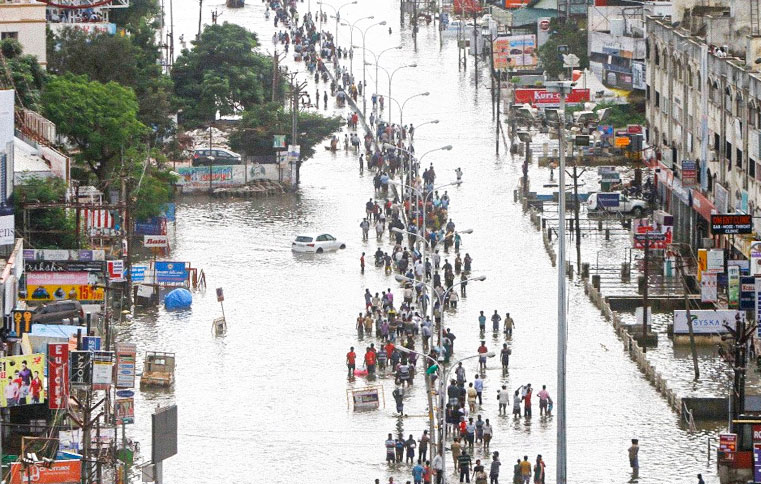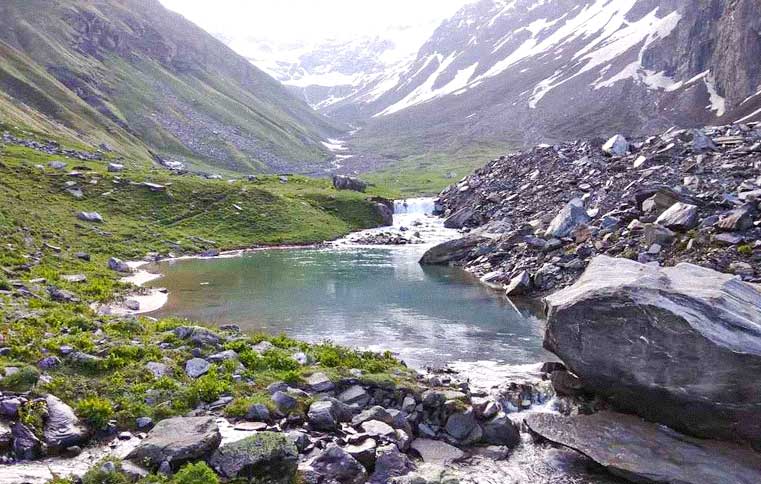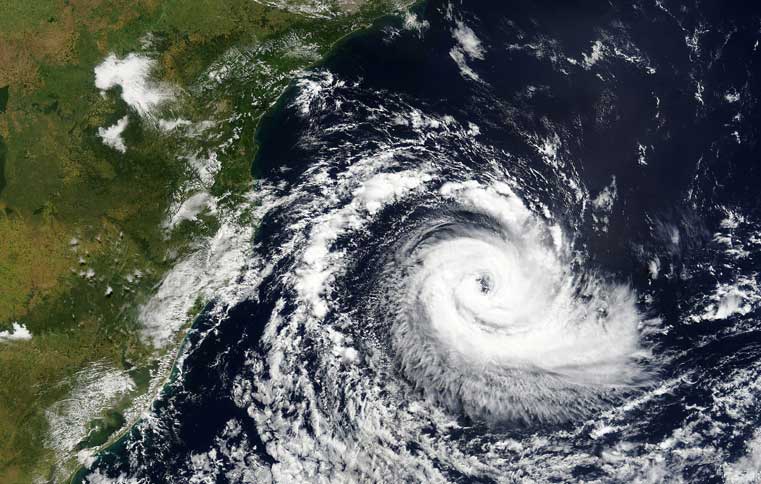Climate change is aggravating India’s water crisis
By: Kamakshi Tatkare | Date: 12th February 2020
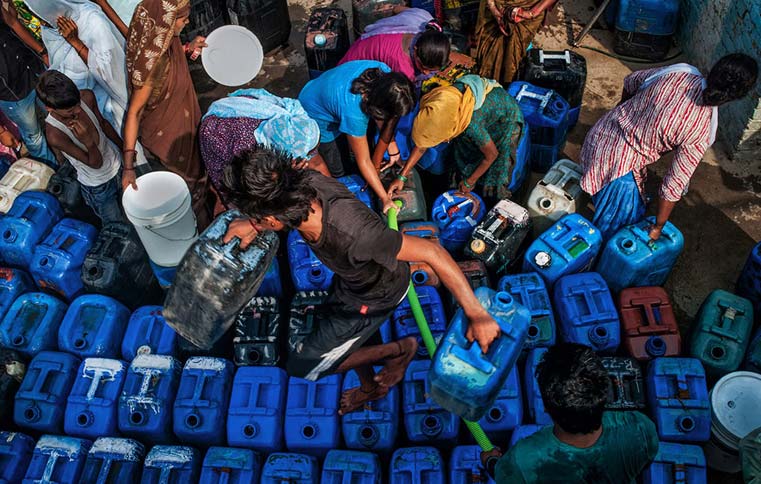 Image Source: Saumya Khandelwal
Image Source: Saumya Khandelwal
The Himalayan, Coastal, Deccan and inland drainage basin rivers have been serving as the lifeline of about 1.38 billions of Indians. Water bodies are plummeting due to severe droughts and nearly 600 million Indians are facing high to extreme water stress.
Back in June 2018, NITI Aayog had reported that “About three-fourth of the households in the country do not have drinking water at their premise. With nearly 70% of water being contaminated, India is placed at 120th amongst 122 countries in the water quality index. About two lakh people die every year due to inadequate access to safe water.
The crisis is only going to get worse. By 2030, the country’s water demand is projected to be twice the available supply, implying severe water scarcity for hundreds of millions of people and an eventual ~6% loss in the country’s GDP2.”
So what did NITI Aayog develop in face of this growing crisis?
Composite Water Management Index (CWMI) was created by NITI Aayog to enable effective water management in Indian states and this Index is expected to:
- Establish a clear baseline and benchmark for state-level performance on key water indicators
- Uncover and explain how states have progressed on water issues over time, including identifying high-performers and under-performers, thereby inculcating a culture of constructive competition among states;
- Identify areas for deeper engagement and investment on the part of the states.
And then what did NITI Aayog conclude?
- Most states have scored below 50% in the Source Augmentation (Ground Water) sector, indicating a growing national groundwater crisis
- Most of states have performed well in irrigation management, scoring more than 50% in the Major and medium irrigation sector.
- Despite widespread existence of participatory irrigation frameworks, on-ground actualization is poor.
- Rural water access is improving, but quality remains a major challenge.
- Urban Water Supply and Sanitation access also suffers from significant gaps, and India’s water treatment capacity is only approximately 33%
- The Policy and governance sector has a more encouraging trend with most states having conservation legislations and about 50% have set up data centres.
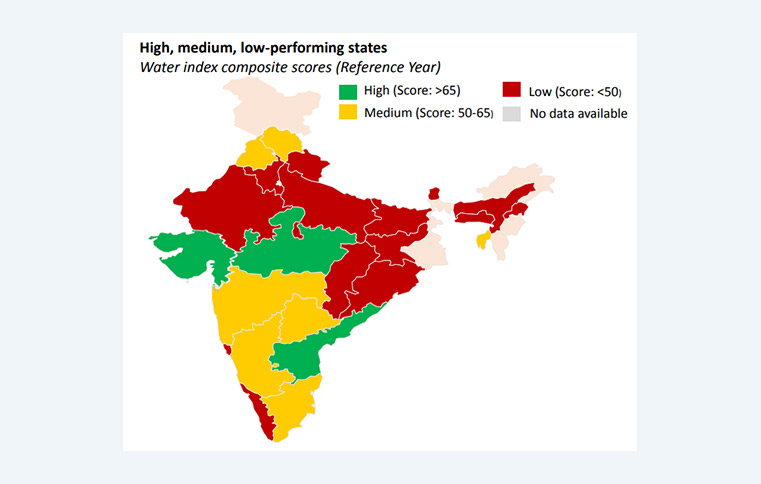 Image Source: NITI Aayog
Image Source: NITI Aayog
Now how has this helped?
It has assisted in evaluating and ranking each state thereby creating a competitive yet cooperative federal atmosphere in the country. For instance, 15 out of 24 of the states, whose data is available, have improved their scores in FY 16-17.
It also indicates that all the states need to perform better as the low performers on the Index are home to about 50% of our Country’s population, which means India is facing severe water risks.
Moreover, the low performing northern states account for approximately 20- 30% of our Nation’s agricultural production, which suggests the food security risk for India.
How is climate change aggravating these findings?
In an article published in the MIT Technology Review, James Temple who is the senior editor for energy, reported “India captures and uses only a fraction of its rainfall, allowing most of it to run off into the ocean.
Meanwhile, farmers without efficient irrigation systems employ heavily subsidized electricity to suck up as much groundwater as possible. Agriculture is the single largest drain on India’s water supplies, using more than 80% of the water despite accounting for only around 15% of the country’s GDP.”
James Temple further explains that “Climate change will surely make the problem worse. It’s uncertain what role higher temperatures have played in recent droughts, as the climate models have mainly predicted increasingly intense Indian monsoons. But the longer-term forecast is that the extremes will become more extreme, threatening more frequent flooding and longer droughts.”
But how does Climate change actually make the Indian Water crisis worst?
We can answer this by pondering on the origins of our rivers and their nature. India’s river system can be categorized majorly into the Himalayan, Coastal, Deccan and inland drainage basin rivers.
The Indus and the Ganga-Brahmaputra-Meghna system form the major Himalayan Rivers system. These rivers, which find their origins in the Himalayan mountain range and are formed by the melting of snow and glaciers, flow continuously throughout the year. During the monsoon months, Himalayas receive very heavy rainfall and rivers swell, causing frequent floods.
The Himalayan climate changes significantly with altitude from snow-capped higher altitude to tropical or subtropical climates at lower heights, and diverse foliage exists over the ranges. The Himalaya are sensitive to climate change and variability (Shrestha and Aryal 2011; Xu et al. 2008).
Most of the warming observed during the last few decades of the 20th century is attributed to the increase in anthropogenic greenhouse gas (GHG) concentrations (IPCC 2007, 2013; Youet al. 2017).
Temperature rise causes more evaporation, which increases atmospheric moisture content, and thereby leads to changes in future spatial and temporal precipitation patterns. Its effect during dry season on the supply of water to humans and agriculture will be unfavorable.
More recurrent inundation instigating rainfall occurrences at higher elevation can augment glacier melting and flood discharge. Such situations can lead to major risks of natural disasters.
Contrary to the Himalayan River system, the Deccan Rivers are rain fed and hence fluctuate in volume. Most of these Deccan Rivers are non-perennial in nature that is they do not flow for a certain period in a year.
The Coastal streams are also mostly non-perennial in nature, especially those on the western coast of our Nation, are short in length and have limited catchment's areas.
In western Rajasthan streams of inland drainage basin are few and most of them are of fugacious character. There are many coastal rivers which are comparatively small. Very few of these rivers drain into the sea near the delta of eastern coast of India yet there are as many as 600 such rivers on the western coast.
A few rivers in this state do not drain into the sea but drain into salt lakes. Apart from such rivers, there are some desert rivers which flow for some distance and get vanished. For instance the Luni, Machhu, Rupen, Saraswati, Banas and Ghaggar.
Now capturing and supplying the water to the places which need it the most over thousands of kilometers, by minimizing the losses which occur due to contamination, leakage or theft when transported within the boundaries of a state and across it is a massive challenge.
We need to save our river goddesses, our lifelines, by taking steps to alleviate Climate change.





